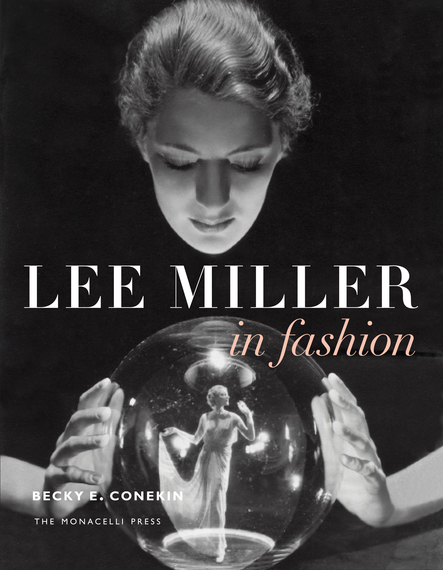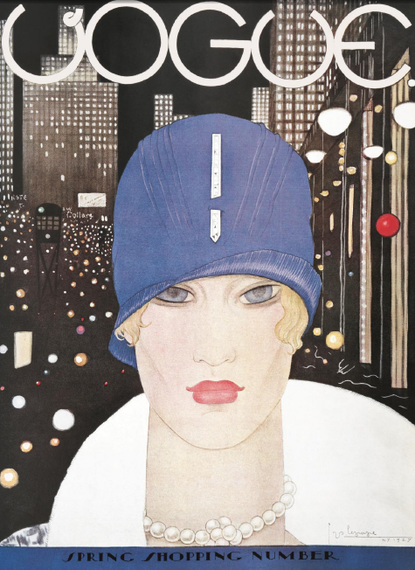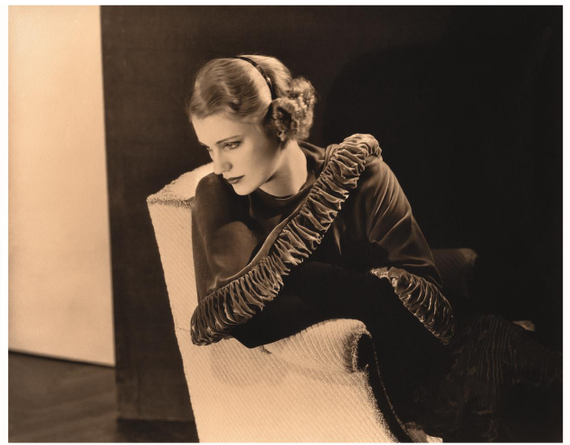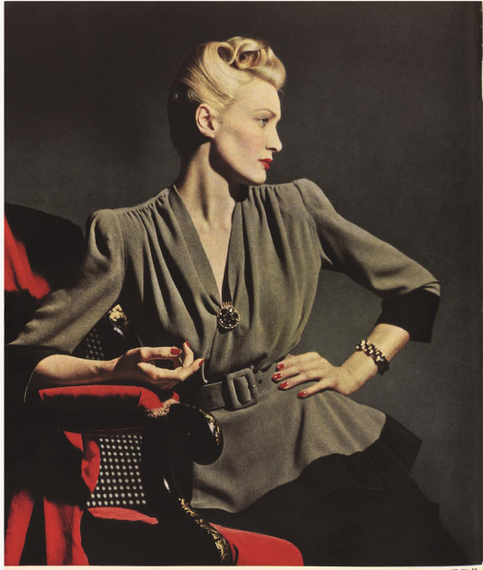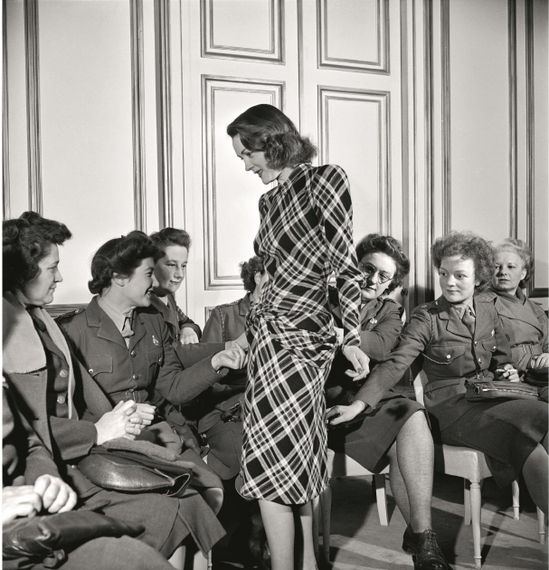After finishing the new book on the life and work of trailblazing model and photographer Lee Miller, I feel confident in saying the only thing ordinary about this woman was her last name. Lee Miller In Fashion by Becky E. Conekin is a lush page-turner that offers a very intimate look at a visionary and risk-taker who lived her life to the fullest.
This engaging 224-page treat taps in to my favorite decades in popular culture (the 1920s, 30s, and 40s) as experienced by a woman who was a force of nature and whose career paved the way for countless others. Filled with gorgeous photos of Miller on both sides of the lens, this book also chronicles the changing face of women from the carefree days of The Flapper to the more sobering years during WWII.
Right Place, Right Time
After a troubled childhood, Miller made her way from Poughkeepsie to New York City. Here she blossomed into a beautiful young woman during the Roaring Twenties. Ever the opportunist, she made it her business to be discovered by publishing mogul Condé Montrose Nast who recognized that Miller had "that intangible quality of chic." In 1927, when Miller was 19, Nast began featuring her stunning good looks and willowy frame on the pages of his marquee publication, Vogue.
Miller quickly became a favorite of designers like Lanvin and Chanel, and she was photographed for many spreads, perfectly posed in the their chicest of ensembles. In addition, much-celebrated illustrator Georges Lepape drew her likeness for one of the most famous Vogue covers in history (March 1927). The cover epitomizes Art Deco with Miller outfitted in smart Flapper garb with a stylized cityscape in the background. The image has long been a favorite of mine, as I am a fan of Lepape's work...it graces the cover of a book I own called The Art of Georges Lepape. It is also available as a poster on the Condé Nast web site.
In short, it's safe to say that from the moment she appeared on the scene, Miller was a sensation, and an early predecessor to the Supermodels popular culture began to worship in that latter portion of the 20th Century. It seems that as the instant fame came her way, Miller took it all in stride
She hopped on-board the jet set and her life was chronicled in trips from New York to London to Paris, and back again. Miller quickly became one of the most photographed women in New York. In fact, it seemed as if Miller had it all...but she wanted more.
From Model To Artist
But by her mid-20s, Miller's ambitions and interests changed. It was at this time that she began to make the unprecedented transition from model to photographer. "I'd rather take a picture, than be one," Miller once said.
Miller embraced Surrealism alongside her lover and one of the masters of that movement, Man Ray. Picasso and Dali were also in Miller's circle, along with many other influential members of the art world.
In 1932, Miller opened her own studio in New York, and much like her full throttle entrance into the world of modeling, she achieved what seems like instant success. Her clients included agencies like BBDO and Henry Sell and marquee companies such as Elizabeth Arden and Saks Fifth Avenue.
As if that wasn't enough, Miller also exhibited her work at galleries and took portraits of celebrities such as Charlie Chaplin and Lilian Harvey. She had successfully transitioned from top model to top photographer.
Towards the end of the decade, however, Miller's new marriage and wanderlust found her away from her studio and back in Europe.
Crisis Becomes Opportunity
When WWII broke out, Miller was abroad, and she received a letter from the U.S. Embassy instructing her to take the next ship home. Instead of doing as directed, Miller ripped up the letter and created an opportunity for herself as a war correspondent. She photographed everything from Eva Braun's abandoned apartment to the liberation of several concentration camps. With a strong and fearless voice as a theme in her work, Miller also chronicled the lives and experiences of women in the war. She photographed female officers, civilians donning fire masks and models showcasing looks for those who kept the home fires burning.
Primarily working for British Vogue, Miller told a story with her photographs, and no matter the exact subject, the common theme seem to be resilience, strength and hope. Her photos during this period speak to her artistic roots, but are thoughtfully appealing to the masses. In short, Miller did the job at hand---and she did it her way.
Lee Miller's Legacy
I had the opportunity to attend a reception for the book's launch at the Staley-Wise Gallery and saw some of Miller's work up close. I also had the chance to speak with author Becky E. Conekin who chronicles Miller's life and work with reverence and enthusiasm.
Conekin also chose many images for the book which have, until now, remained unpublished. As such, this book aggregates some of the edgier and most interesting photos in Miller's portfolio. Her personality is highlighted not only in the anecdotes Conekin shares, but also in those images that speak to her ability to be a working photographer while also giving nods to her values and unique point of view.
One example I enjoyed was a simple spread entitled "Tonic Tweeds" for British Vogue where Miller featured her model in front of a Henry Moore sculpture entitled "Mother and Child." What could have been a relatively humdrum feature became a showcase for controversial art. Moore's work, which is now highly regarded, was controversial and highly criticized at the time, so Miller seized the opportunity to do her part in giving it positive exposure and credibility.
During my conversation with Conekin, she spoke passionately about the artist's feminist stance, risk taking and joie de vivre. I asked her what she thought Miller's advice would be to young photographers out there and she replied simply: "Don't squander your opportunities and keep reinventing yourself."
It seems that's exactly how Miller lived.
Lee Miller in Fashion by Becky E. Conekin is published by Monacelli press. For more information, visit www.monacellipress.com
All images are courtesy of Monacelli Press and appear in the book.
